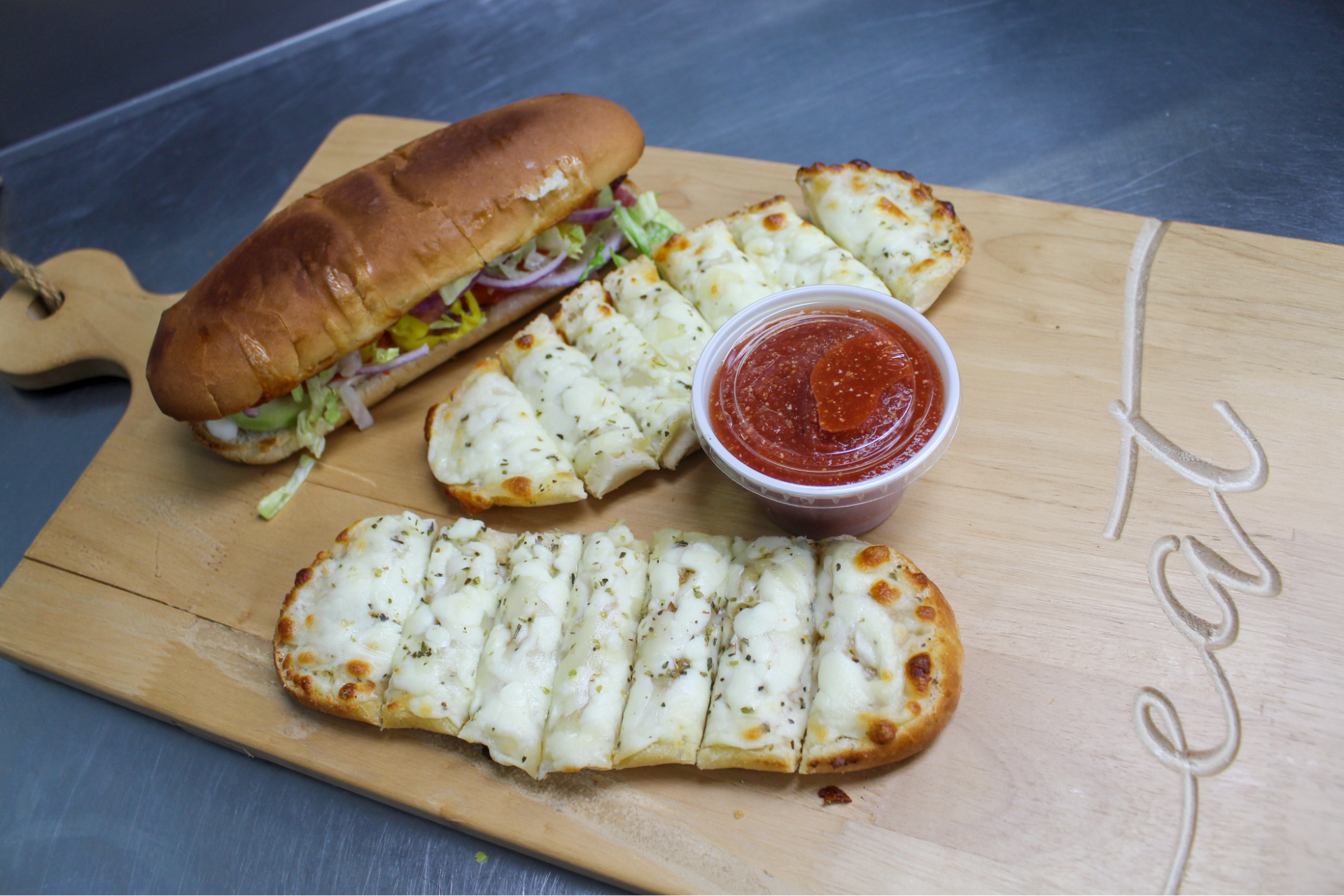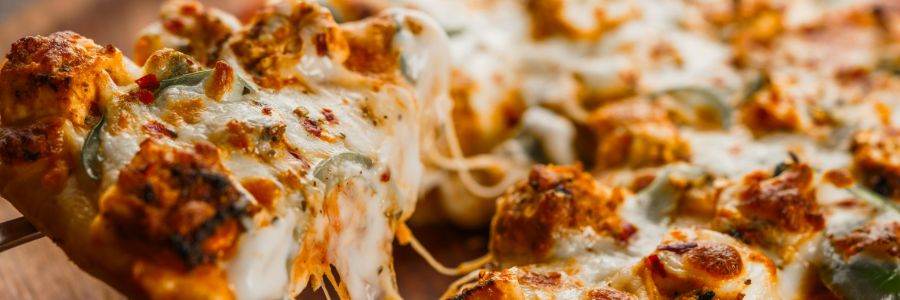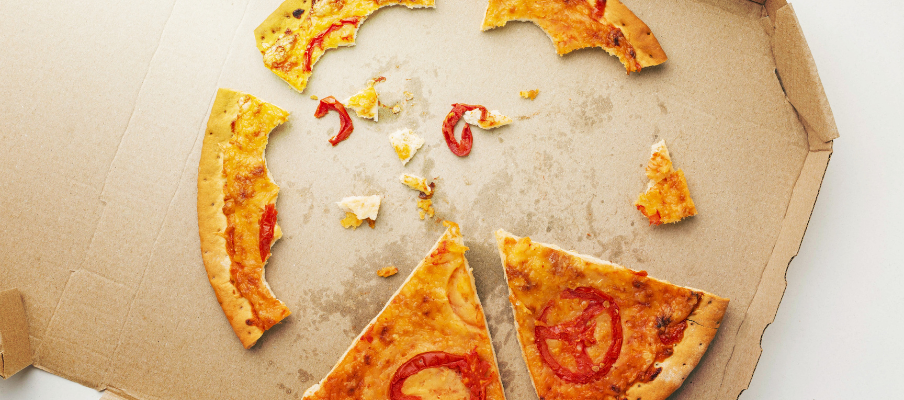How Many Calories Are in a Slice of Pizza?
Understanding the Caloric Content of Pizza
When it comes to pizza, understanding its caloric content is essential for making informed choices. The number of calories in a slice can vary widely based on several factors.
Factors Influencing Caloric Content
- Type of crust: Thin crust usually has fewer calories than thick or stuffed crust.
- Toppings: Extra cheese, meats, and sauces can significantly increase calorie counts.
- Serving size: Larger slices naturally contain more calories.
Common Misconceptions
- Many people think all pizzas are unhealthy, but there are healthier options available.
- Some believe that all toppings add the same amount of calories, which is not true.
- It's a common myth that pizza is only a junk food; it can be part of a balanced diet.
Importance of Portion Control
- Eating a smaller slice can help manage calorie intake.
- Sharing a pizza can make it easier to enjoy without overindulging.
- Being mindful of how many slices you eat is key to maintaining a healthy diet.
Understanding how long it takes you to burn calories after eating a slice of pizza can help you make better choices. It’s important to balance your meals with physical activity.
Different Types of Pizza and Their Caloric Values
When it comes to pizza, the type you choose can greatly affect how many calories are in a slice. Different styles of pizza have different caloric values, and knowing these can help you make better choices. Here’s a look at some popular types:
Cheese Pizza
- Typically contains around 200-300 calories per slice.
- Made with a simple tomato sauce, cheese, and a crust.
- A classic choice that many people enjoy.
Pepperoni Pizza
- Usually has about 250-350 calories per slice.
- Features pepperoni slices on top of cheese and sauce.
- A favorite for those who like a bit of spice.
Vegetarian Pizza
- Generally ranges from 200-300 calories per slice.
- Loaded with various vegetables like bell peppers, onions, and mushrooms.
- A great option for those looking for a healthier choice.
Specialty Pizzas
- Can vary widely, often containing 300-500 calories or more per slice.
- May include unique toppings like barbecue chicken, seafood, or extra cheese.
- These pizzas can be delicious but often come with higher calorie counts.
Understanding the caloric values of different pizza types can help you enjoy your favorite food while keeping an eye on your diet.
How Toppings Affect the Calories in a Slice of Pizza
Meat Toppings
Meat toppings can significantly increase the calories in a slice of pizza. Here are some common meat options:
- Pepperoni
- Sausage
- Bacon
Each of these adds not only flavor but also extra fat and calories.
Vegetable Toppings
On the other hand, vegetable toppings are generally lower in calories. Some popular choices include:
- Bell peppers
- Onions
- Mushrooms
These toppings can enhance the taste without adding too many calories.
Cheese and Sauce Variations
The type and amount of cheese and sauce can also change the calorie count:
- Extra cheese will raise the calorie content.
- Using a lighter sauce can help keep calories down.
- Choosing low-fat cheese is another way to reduce calories.
Remember, the toppings you choose can make a big difference in the overall calories in a slice of pizza. Being mindful of your choices can help you enjoy pizza without overdoing it.
Comparing Homemade and Restaurant Pizza Calories
When it comes to pizza, the calories can vary a lot between homemade and restaurant options. Understanding these differences can help you make better choices.
Ingredients Used
- Homemade Pizza: You control what goes in. You can use whole wheat flour, fresh veggies, and low-fat cheese.
- Restaurant Pizza: Often uses pre-made dough and sauces that can be high in calories and preservatives.
- Frozen Pizza: Many frozen options are loaded with unhealthy fats and sodium.
Cooking Methods
- Baking at Home: You can bake your pizza in a healthier way, like using less oil or cooking it on a stone.
- Fried Pizza: Some restaurants fry their pizza, which adds extra calories.
- Grilling: Grilling can be a healthier option that adds flavor without too many extra calories.
Portion Sizes
- Homemade Slices: You can cut your pizza into smaller slices, making it easier to control how much you eat.
- Restaurant Slices: Often larger and can lead to overeating if you’re not careful.
- Sharing: Ordering a pizza to share can help reduce the number of calories you consume in one sitting.
Making your pizza at home allows you to choose healthier ingredients and control the portion sizes, which can lead to a more balanced meal.
Tips for Reducing Calories in Your Pizza Slice
Choosing Healthier Toppings
- Opt for lean meats like chicken or turkey instead of high-fat options like sausage or pepperoni.
- Load up on vegetables such as bell peppers, onions, and spinach for added flavor without many calories.
- Consider using less cheese or choosing a lower-fat cheese to cut down on calories.
Opting for Thin Crust
- Thin crust pizzas generally have fewer calories than thick or stuffed crusts.
- A thinner base means less dough, which can significantly reduce the overall calorie count.
- If you love the crunch, try a crispy thin crust that still gives you that satisfying texture.
Controlling Portion Sizes
- Instead of eating a whole pizza, try sharing with friends or family to enjoy smaller slices.
- Use a smaller plate to help control how much you serve yourself.
- Be mindful of how many slices you take, and consider saving leftovers for later.
Making small changes can lead to big differences in your pizza's calorie count. By being mindful of your choices, you can enjoy your favorite food while keeping your health in check.
Nutritional Information Beyond Calories
When it comes to pizza, calories are just one part of the story. Understanding the nutritional content can help you make better choices. Here are some important aspects to consider:
Macronutrients in Pizza
- Carbohydrates: The crust is mainly made of carbs, which provide energy.
- Proteins: Cheese and meat toppings add protein, essential for muscle growth and repair.
- Fats: Cheese and certain toppings contribute fats, which are necessary for overall health but should be consumed in moderation.
Vitamins and Minerals
- Calcium: Cheese is a great source of calcium, important for strong bones.
- Iron: Meat toppings can provide iron, which helps in transporting oxygen in the blood.
- Vitamins: Vegetables on pizza can add vitamins like A and C, which are good for your immune system.
Impact on Daily Diet
- Balance: Pizza can fit into a balanced diet if consumed in moderation.
- Variety: Choosing different toppings can enhance the nutritional value of your meal.
- Mindfulness: Being aware of what’s in your pizza can help you enjoy it without overindulging.
Remember, while pizza can be a tasty treat, it’s important to think about what you’re eating beyond just the calories.
Healthier Alternatives to Traditional Pizza
When it comes to enjoying pizza without the extra calories, there are several tasty options to consider. Choosing healthier alternatives can help you enjoy your favorite dish while keeping your diet in check. Here are some popular choices:
Cauliflower Crust Pizza
- Made from grated cauliflower, this crust is low in carbs and calories.
- It’s gluten-free, making it a great option for those with gluten sensitivities.
- Cauliflower is rich in vitamins and fiber, adding nutritional value to your meal.
Whole Wheat Crust Pizza
- Whole wheat crust is higher in fiber compared to regular crust, which can help you feel full longer.
- It contains more nutrients, such as B vitamins and minerals.
- This option is a simple swap that can make your pizza healthier without sacrificing taste.
Low-Fat Cheese Options
- Using low-fat cheese can significantly reduce the calorie count of your pizza.
- It still provides the creamy texture and flavor you love, but with less fat.
- You can also try cheese alternatives made from nuts or soy for a different taste.
Exploring these healthier pizza options allows you to enjoy your meal while making better choices for your health. Remember, small changes can lead to big differences!
Conclusion
In summary, the number of calories in a slice of pizza can vary a lot based on what toppings you choose and the type of crust. On average, a basic slice of cheese pizza has around 200 to 300 calories. If you add more toppings like pepperoni or extra cheese, the calorie count can go up. It's important to think about what you eat and how it fits into your daily meals. Enjoying pizza is fine, but being aware of the calories can help you make better choices for your health.






